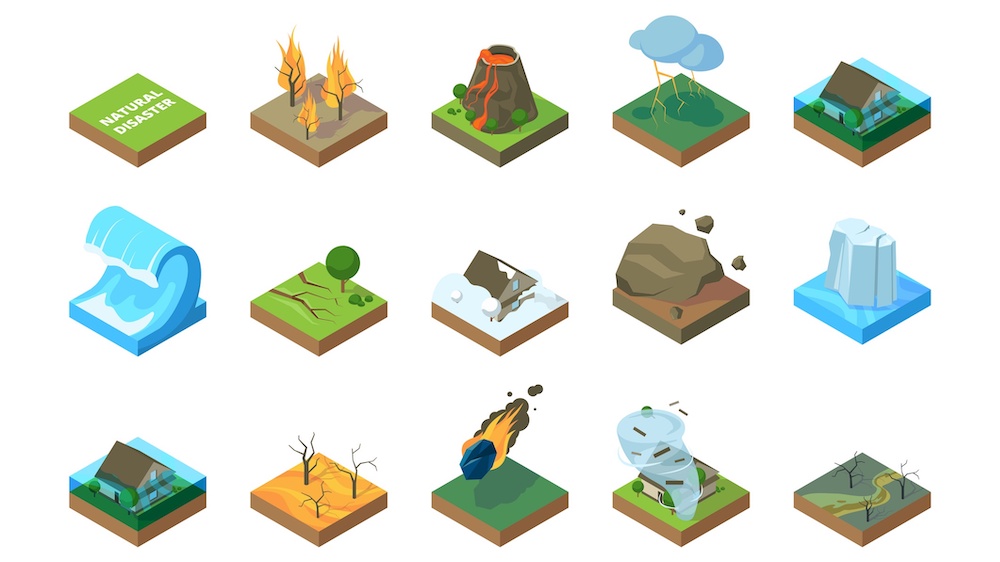If you’re interested in sharing your opinion on any cultural, political or personal topic, create an account here and check out our how-to post to learn more.
____
This year has been filled with angst about the COVID-19 pandemic, civil unrest and a series of natural disasters that seem surreal. One of the most impacted states is my home state of Louisiana.
Like many, I went through Hurricane Katrina and understand the stress and impacts of living through what can feel like a never-ending crisis, especially those in Black and brown communities. These experiences inspired me to go into disaster preparedness and recovery work. Recently, I have been more focused on this work due to the fact that our communities are disproportionately impacted and more vulnerable to natural disasters, due to factors such housing patterns and community isolation.
For example, on average, white households have 10 times the wealth of Black households and eight times the wealth of Latino families, meaning they are better positioned to recover from major events. Moreover, 58% of Black Americans and 54% of Latino Americans rent versus 34% of Americans overall, putting them at a higher risk for housing insecurity following a natural disaster.
Combined with COVID-19, our communities now face new challenges to stay safe this natural disaster season, making it even more important to take small steps from the start to help protect their families should a natural disaster strike.
Knowing how to prepare and recover from these events has to be a priority for communities and families, which is why I’m partnering with Clorox to get the message out about the importance of disaster preparedness — especially in the midst of a global pandemic. This year has been challenging but staying safe and prepared does not have to be overwhelming.
The first thing to understand is that the COVID-19 pandemic means that our “go-kits” should now include masks, hand sanitizer and disinfecting products like Clorox Disinfecting Bleach, which can be used to keep surfaces disinfected if you are sheltering at home as well as if you go to a public shelter or hotel. Secondly, we have to be conscious of following social distancing guidelines every time we leave our homes. With these added concerns, it is all the more important to be prepared should you need to evacuate. If you do, I recommend the following preparedness tips:
– Have an evacuation plan. Check ahead for shelter space as social distancing measures may limit availability.
– Evacuate with your family or “social pod.” To avoid added exposure to COVID-19, go with people you know!
– Make sure you have gas in your car, cash on hand (in case power and ATMs are out) and your “go-kit” packed.
– Your “go-kit” has the items listed above plus enough water and non-perishable food to last three days. You can stock up on items at your local drug store to keep costs low. For additional guidance on what your “go-kit” needs, visit Clorox.com/Disaster-Preparedness.
For those evacuating with family, I have two other recommendations. One is to pack non-electronic games like cards, board games, even some jacks and chalk to play hopscotch or doodle. All of these games can serve as welcome distractions to help entertain anxious or bored children. The second thing I make a point of doing is to write children’s names and the names of the elderly people in my family on luggage tags or an index card and put it in a pocket. In the unlikely event we are separated, this can help law enforcement and first responders get them home. It also provides everyone greater peace of mind.
In the event that you are in the position of having to clean up and recover from a storm, fires or some other event, my first recommendation is to stay connected with people in your community. Because of the pandemic, support systems can seem distant, making it all the more necessary to think about how you will reconnect with friends and loved ones. I personally have a group text of extended family to reach out to both stay socially connected during pandemic lockdowns and in the event of a storm. Having been through a major disaster recovery process, I cannot express enough about the importance of family and friend connections and support amidst post-disaster recovery.
Some other helpful tips for recovery and cleanup I recommend are the following:
– Keep up with local news for any alerts to make sure it is safe to return.
– Wear your mask and other protective gear during cleanup efforts.
– Use Clorox Disinfecting Bleach to not only clear mold and mildew from your home, but also to salvage items like clothes and linens that could have smoke or water damage. For directions on how to do so, follow the instructions for use on the product label. You can also visit Clorox.com/disaster-preparedness for directions for use.
Preparing for disasters during a pandemic can be daunting, but nothing overcomes a challenge like a good plan. While we hope we never have to use them, planning early is the best way to stay safe and sane.
